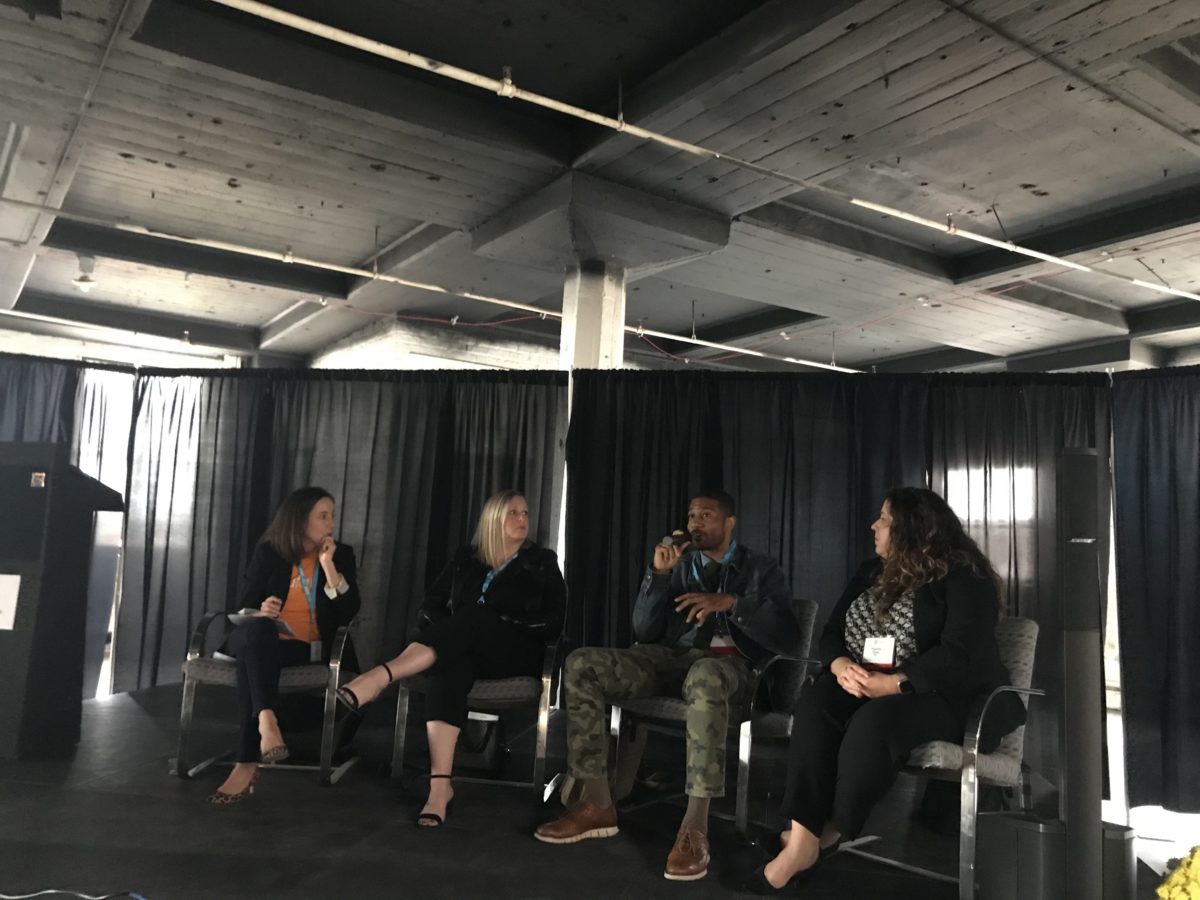The unique role that technology and design play in problem-solving makes them sought-after skills at workplaces. With an emphasis on skills and the ability to learn continuously, the varied paths taken to careers in these emerging fields have also opened up new ways of entering the workforce.
At local universities, the leaders that are connecting students with careers are taking this into account as they create the programs and guidance that will help students prepare for what’s next. After all, there’s a notorious need to hire in these fields.
During a panel including leaders from UMBC’s Maryland Technology Internship Program, the MICA and Johns Hopkins Carey Business School Design Leadership program (MA/MBA), Fjord and Catalyte that was organized by Technical.ly at Baltimore Innovation Week’s Dev Day, it was apparent from those involved with these efforts that the change goes beyond looking at the right fit for a job.
Finding the opportunities that are right in one’s own region, considering how they fit into life goals and taking approaches that are accessible to all are several of the considerations.
Here’s a look at key takeaways from the panel exploring where workforce development meets higher education:
Connect students and local companies.
While cultural shorthand have associated technology careers with specific locales, there’s plenty happening on the local level.
The Maryland Technology Internship Program offers funding for companies in the state to bring on interns from local colleges. Administered by UMBC, the program is offered to companies and colleges statewide.
Along with providing a way to explore and test interests on a career path, the local internships can help students discover a company they may not have known about. That creates onramps into the local economy.
“We can uncover opportunities and show students how they can grow their careers and stay in Maryland,” said Annie Weinschenk, the assistant director of MTIP.
Weinschenk has also observed how industry partnerships with universities around the state can help create places for companies seeking more direct ways to connect with students. In Southern Maryland, she said, the Navy is partnering with universities as it looks for designers and artisans.
And it’s not only higher ed where industry is playing a role. Companies are sponsoring hackathons and creating new forums to offer places to meet.
Along with better interactions, all of these onramps also provide for a give-and-take that’s lower stakes than a career fair setting.
Embrace life design.
At Johns Hopkins Carey Business School, the career development team is helping students think not just about jobs that fulfill their goals, said Michelle Jones, senior associate director of career education and life design.
“We are working toward helping students think beyond the career ladder,” Jones said.
Rather than a focus on working with a particular job or a particular company, Carey is providing students with resources, including a “life design” class that is being designed right now. The idea is to create pathways that allow for successful careers, and also have room to tap into passions.
On a higher ed + workforce development discussion at Dev Day, Michelle Jones said @JHUCarey helps students in life design, helping students think beyond the corporate ladder #BIW19 pic.twitter.com/cZTVw257ys
— Technical.ly Baltimore (@TechnicallyBMR) October 9, 2019
Develop the skills to work on collaborative teams.
An engineer by training, Brandon Ball recognized his own passion for design, and how those skills were needed in the market. He entered the MICA/JHU design leadership program and is now a business designer at Fjord, which is a business of Accenture Interactive.
But he hasn’t stopped learning: Ball continues to develop skills along the way, even if it’s through online courses, he said.
And Ball noted that for many jobs, a degree isn’t required. A strong portfolio or Github and the ability to work with a team are the key ingredients. And to meet potential employers and other connections, he said it’s just as important to get out and network.
A mentor once told him: “Network or not work,” he said. “I live by that today.”
Join the conversation!
Find news, events, jobs and people who share your interests on Technical.ly's open community Slack

Baltimore daily roundup: Medtech made in Baltimore; Sen. Sanders visits Morgan State; Humane Ai review debate

Baltimore daily roundup: The city's new esports lab; a conference in Wilmington; GBC reports $4B of economic activity

Baltimore daily roundup: Find your next coworking space; sea turtle legislation; Dali raided and sued


